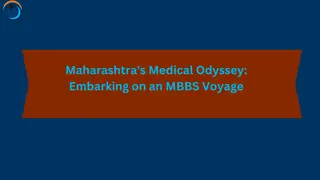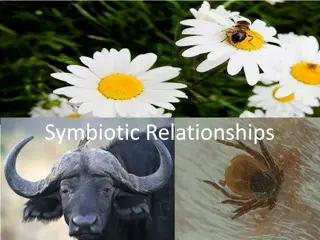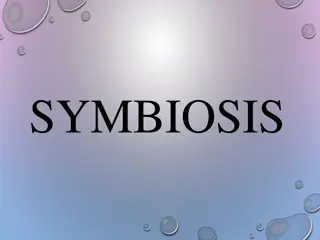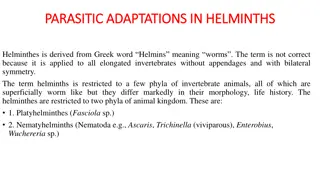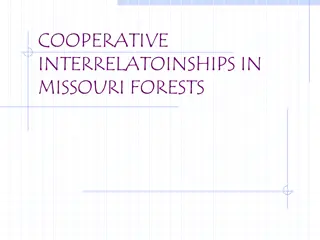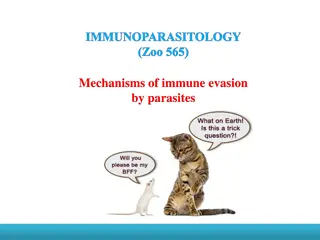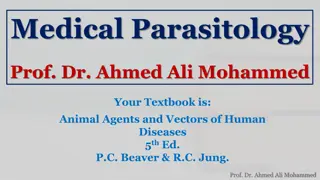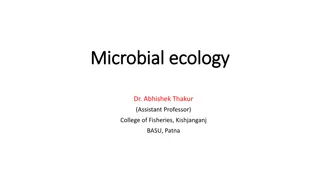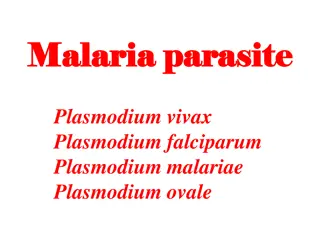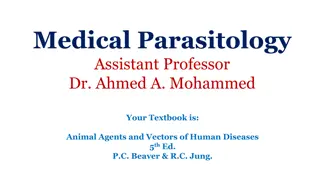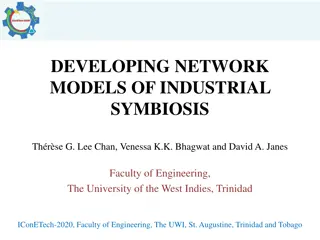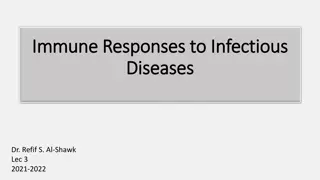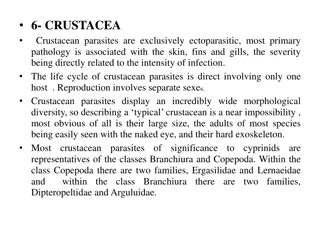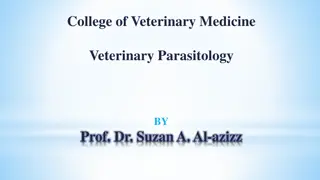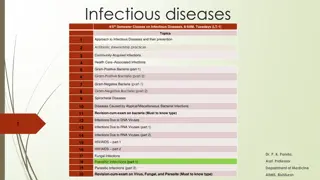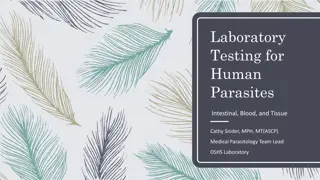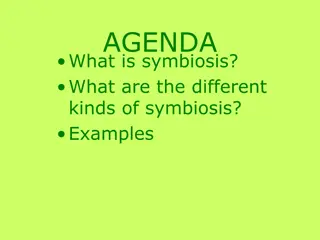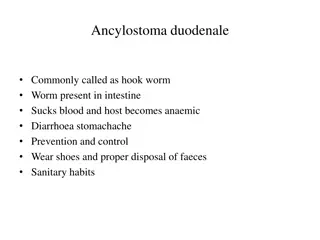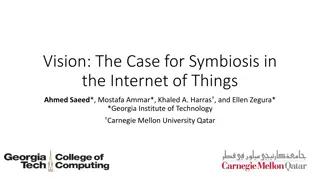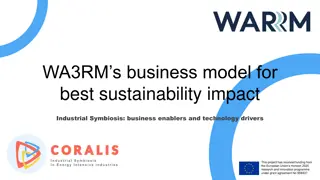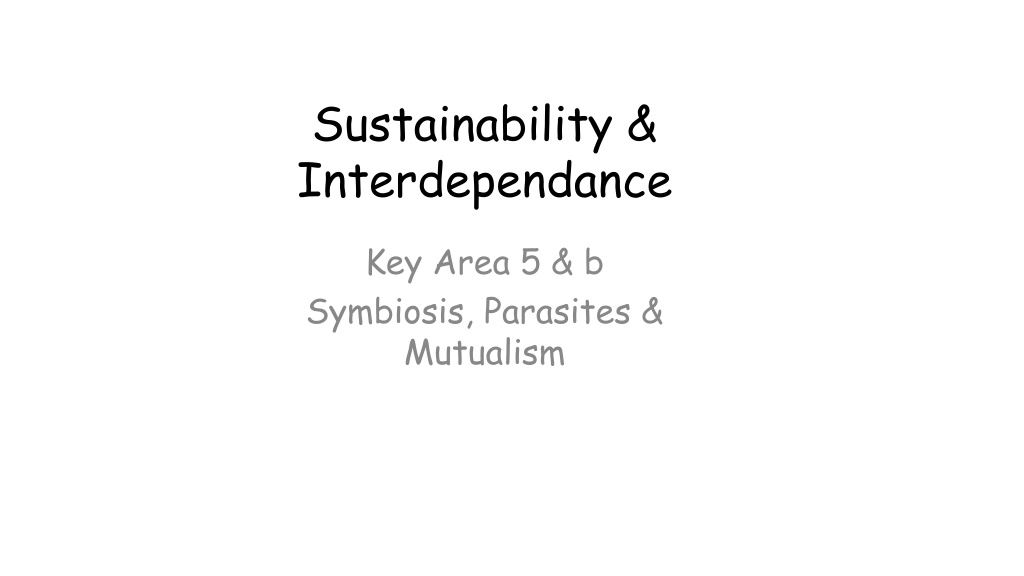
Understanding Symbiosis: Parasites and Mutualism in Interdependence
Explore the intricate relationships of symbiosis, focusing on parasitism and mutualism in the context of sustainability and interdependence. Learn how parasites benefit from hosts while causing harm, and how mutualistic partnerships lead to mutual benefits and co-evolution. Delve into the dynamics of these interdependent connections between different species.
Download Presentation

Please find below an Image/Link to download the presentation.
The content on the website is provided AS IS for your information and personal use only. It may not be sold, licensed, or shared on other websites without obtaining consent from the author. Download presentation by click this link. If you encounter any issues during the download, it is possible that the publisher has removed the file from their server.
E N D
Presentation Transcript
Sustainability & Interdependance Key Area 5 & b Symbiosis, Parasites & Mutualism
Learning Intentions By the end of this topic you should be able to: Define symbiosis as a co-evolved intimate relationship between members of two different species. Describe the benefits of a parasite in terms of energy and nutrients. Describe how the parasitic host is harmed by the loss of energy and nutrients. Describe how parasites are transmitted to new hosts by using direct contact, resistant stages and vectors. Describe how some parasitic lifestyles involve secondary hosts. State that parasites often have limited metabolism so often cannot survive out of contact with a host. Define mutualism as a close/intimate/long-term relationship in which both species benefit. Explain the theory of mutualism in the evolution of mitochondria and chloroplasts. Describe the benefits that mutualistic partners have from their interdependent relationship.
Symbiosis Symbiosis is an ecological relationship between organisms of two different species that live in direct contact with one another. These are intimate relationships that have evolved over millions of years (co-evolution) and so a change in one organism will likely effect the survival of the other
Symbiosis There are two types of symbiosis: 1. Parasitism 2. Mutualism
Parasitism This is when one organism, (parasite) benefits (gets energy/nutrients) and the other organism (host) is harmed by loss of these resources This relationship can be shown using the symbols +/- The parasite is always dependant on the host
Parasitism In many cases, a stable relationship has evolved and a balance exists between defence mechanisms in the host and damage inflicted by the parasite Example: Headlice and humans
Parasitism Parasites often have a limited metabolism and some cannot survive out of contact with the host (e.g. tapeworms do not have a digestive system since the host has already digested the food) Some parasites live and feed inside the host, some outside Obligate parasites can t survive without the host (limited metabolism) so they do not want their host to die (at least until completion of the parasites life cycle) Faculative parasites can live with or without host
Transmission of parasites Parasites can be transmitted to new hosts in a variety of ways: 1. Direct contact passed from person to person by physical contact e.g. head lice.
2. Release of resistant stages allows them to survive adverse environmental conditions until they come into contact with a new host (e.g. cat fleas have a pupa stage which they can survive in for up to a year) 3. Use of a vector for example mosquitoes carry Plasmodium, the unicellular organism that causes malaria, from human to human.
Parasitic life cycles There are two types of parasitic life cycle: 1. Direct life cycle 2. Indirect life cycle
Direct Parasitic life cycles In direct parasitic life cycles, eggs are shed and pass on to a new member of the host species. This involves only one species of host and is common amongst parasites such as flea and louse that live and feed outside of their host
Indirect Parasitic life cycles Indirect parasitic life cycles tend to be more highly evolved and in addition to using a primary host species as the site for its sexual reproduction, the parasite becomes adapted by evolution to employ a secondary host species in its life cycle. A new primary host becomes infected when it is invaded by or consumes the infected secondary host. This is common with tapeworms and other parasites that live and feed inside their host
Life cycle of tapeworm
Advantage of Indirect Parasitic life cycles Not only can the parasite reproduce sexually inside the primary host, some parasites can also use the secondary host as a site for asexual reproduction. This allows the parasite to increase its reproductive capacity and chance of survival
Mutualism In a mutualistic symbiotic relationship both organisms involved benefit from the relationship. Mutualism shows interdependence as the two partners are mutually dependant on each other. This relationship can be shown using the symbols +/+
Mutualistic relationships These can be: 1. A relationships where both organisms provide a service e.g. Clown fish and anemones The anemones provide the fish with protection from predators (which cannot tolerate the stings of the anemone's tentacles) and the fish defend the anemones against butterflyfish which eat anemones.
2. Relationships where one organism provides a service and another receives a resource e.g. Flowering plants and bees. The bees pollinate the plants while the plant provides nectar which is a food source to the bees.
3. Relationships where both organisms receive a resource e.g. human gut microflora. The human gut is full of many species of bacteria, fungi etc. These perform a host of useful functions such as fermenting unused energy substrates; training the immune system; preventing growth of harmful pathogenic bacteria; regulating the development of the gut; producing vitamins for the host such as biotin and vitamin K. The microbes in return receive a steady supply of food.
Mutualism other examples Photosynthetic algae is found in the polyps of coral Cellulose-digesting protozoa/bacteria found in the guts of herbivores e.g. Boulder Brain Coral
Coral Polyps Coral polyps are animals that resemble sea anemone but are unable to move from place to place. It secretes a hard skeleton which attaches to the skeleton of earlier polyps forming a coral reef. It feeds on microscopic organisms and tiny bits of organic debris. Zooxanthella are unicellular algae which live within and between the polyp. The polyp uses up to 80% of the energy made by the algae (produced by photosynthesis) and the algae are provided with a secure habitat and the nitrogenous waste the polyp produces (can covert this to protein).

